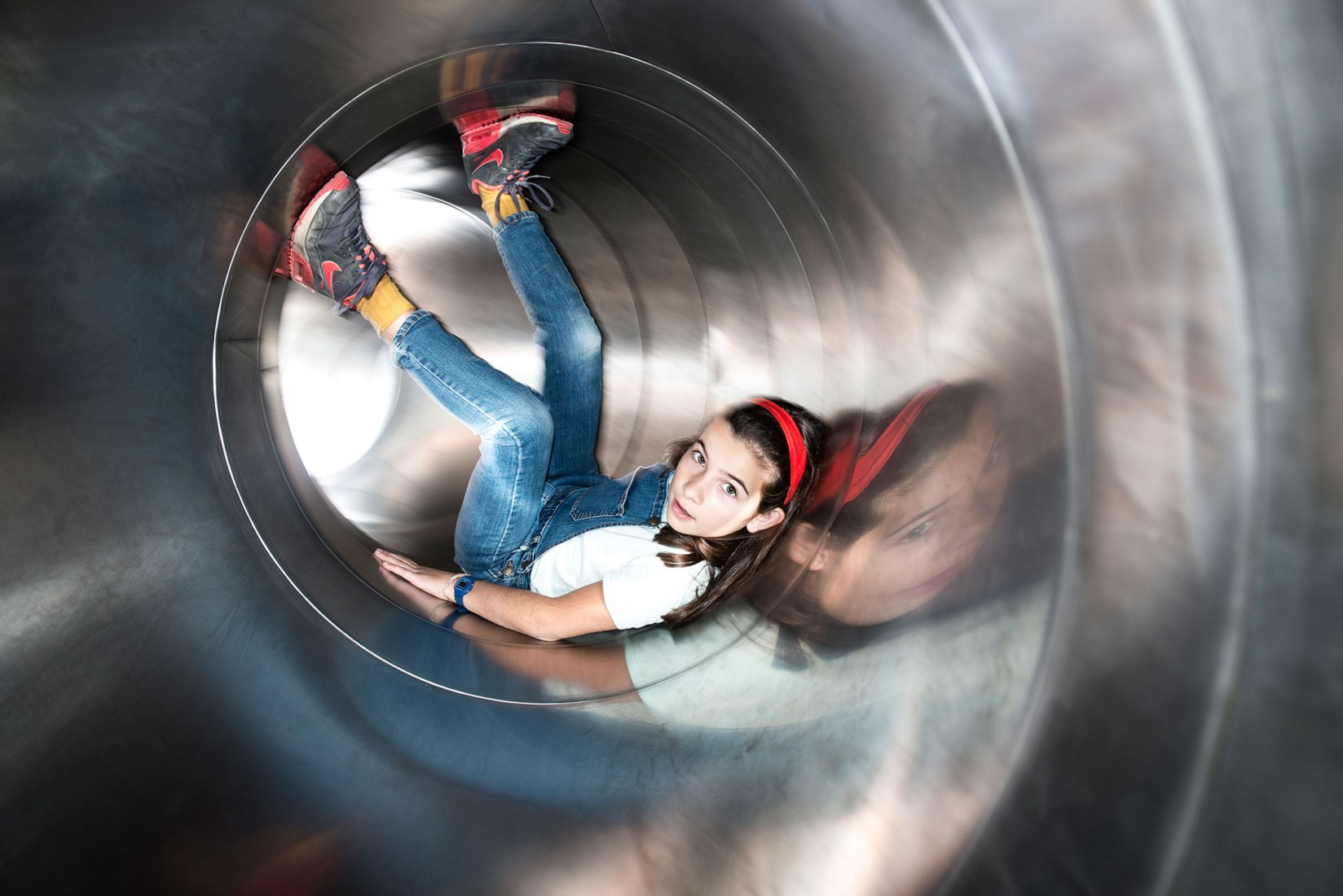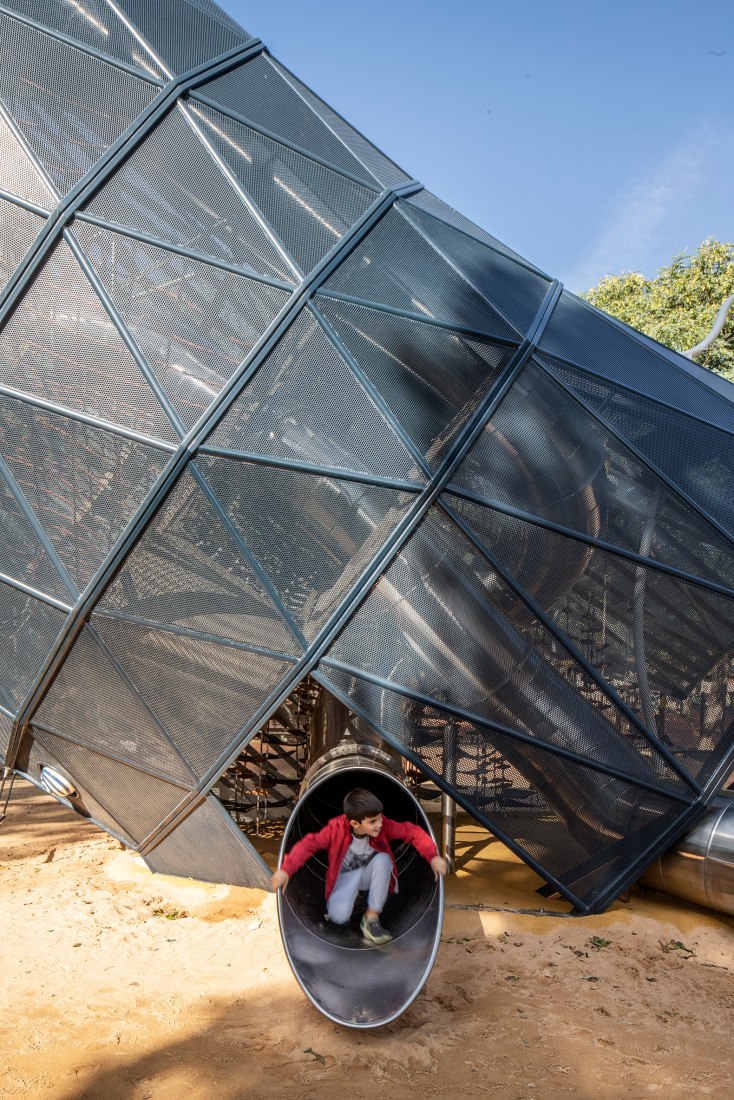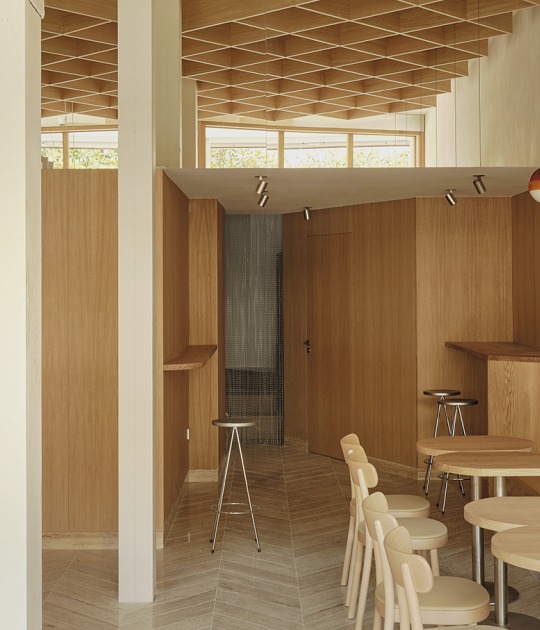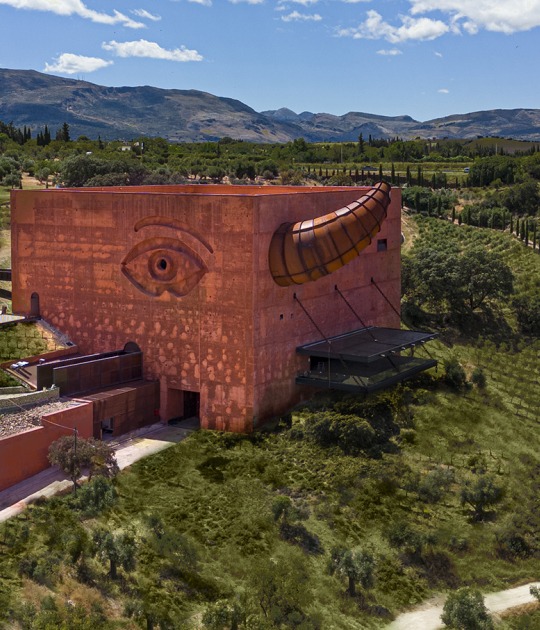The game ecosystem is based on the articulation of a dense set of spaces to play, concentrated mainly inside the Whale, where the body functions as a great container to explore, where space and action merge. This playground in the park fosters children's imagination and autonomy, builds spatial complexities.
Project description by Queralt Suau
Barcelona has a plan: to make the city a kinder environment for its citizens, especially for the little ones. Within the framework of the Game Plan in the Public space of Barcelona. Horizon 2030, the Queralt Suau studio was commissioned to design a playable whale in the Nou Barris park, an idea that was born from a participatory process with students from neighborhood schools.
The dynamics of co-creation has been the backbone of the project from the initial phase of conception to the final phase of construction. The students of the surrounding schools have participated in co-creative processes to define the elements that could stimulate their play in public spaces. His imagination shapes the unique game in Nou Barris Central Park: a playable whale
We set out to approach the complexity of the project from a critical perspective that explores various concerns ranging from:
- Work with the game in public space as a strategy to resignify the place and build shared (imaginary) spaces.
- Articulate the space from the total integration of a playable elements system.
- Define a coherent game system, leaving room for imagination, free play, and experimentation.
- Constitute a sensory and material experience, a game at different scales that assumes the participation of different ages and conditions, with the maximum possibility of itineraries, routes, and actions.
- Define a game system, leaving room for imagination, free play, and experimentation.
- Get a feeling of belonging to the place.
To carry out the project, Recreology - Lappset Spain joins in to build this new Barcelona gaming space, contributing its extensive experience in unique games.
The narrative defines the space
The singular game functions as a new milestone in the park, generating a narrative around it that redefines the place, facilitating the appropriation of children and families. Visible through the treetops, it becomes an attractor and mobilizes both the uses of the space and the actions of its users. The game recreates a dynamic situation: a large whale is jumping, and next to it, a smaller whale is re-entering the sea, revealing only its tail. In this way, it becomes a new symbol, where the game is the protagonist of the place. In the great Whale, the belly gives rise to a dreamlike universe, which unfolds the imaginary of Mobby Dick or Pinocchio to reinvent the game based on fantasy.
The gaming ecosystem
The game ecosystem is based on the articulation of a dense playable set, concentrated mainly inside the Whale. Your body functions as a great container to explore, in which space and action merge.
The spatial configuration is associated with the anatomy of the whale: The mouth is a large ship with a dense pattern of hammocks at different heights. Hammocks are orange, like krill, which is one of the main foods of whales. Next to it, the brain is a large vertical labyrinth, space to cross to reach the slides, which in turn function as the spine.
Inside the belly, there is a dream space that refers to the literary classics, where the great marine mammal harbors a prodigious source of imagination inside. A large school of fish is organized on one side, building a dense landscape where to walk, climb, jump or touch. As the game progresses, space encourages more autonomy.
Stuck in the deep sea, a folded paper boat creates the most leisurely game and encourages unexpected discovery for minors. Parallel to his side, a buoy that is lowered inside needs collective work to activate the great fin of the whale, which moves to the rhythm of children's play.
Materiality as value
Sensory experience and materiality shape the spatial narrative and activate creative and imaginative play mechanisms. The micro-perforated skin causes a continuous game of seeing or being seen, so the whale's mouth creates comfortable shade conditions. The boundary between interior and exterior is blurred and the game gains more autonomy without losing security.
In the mouth, the hammocks overlap at different heights creating spatial dynamics and visual rhythm. The constituent layers of the whale's interior build a meandering labyrinth of rope and rubber, which ends in a large viewpoint.
The boat stranded in the rubber dunes and the bank of 400 iroko wood fish star in the game of texture and touch, accessible to all.
Actions and discoveries
Generating multiple playable itineraries allows for personal discovery and free improvisation enabling a wide variety of actions. Game situations are generated anywhere. There is no way to play, just an open game system with multiple options. The complexity and density make up a variety of routes that are richly adapted to the ages of the users. Being an integrated system, it favors any imagined activity.
Be part of the game
The game as a milestone achieves a triple effect, being the generator of new dynamics of the public space, promoting appropriation, and making the game learning experience.
The play space in the Nou Barris Park encourages children's imagination and autonomy, builds spatial complexities where users of different ages and conditions live together. La Ballena has become an environment of social complicity, where thanks to imagination and play, belonging to the place is generated, and one more step is taken towards the objective of the Playable City.















































